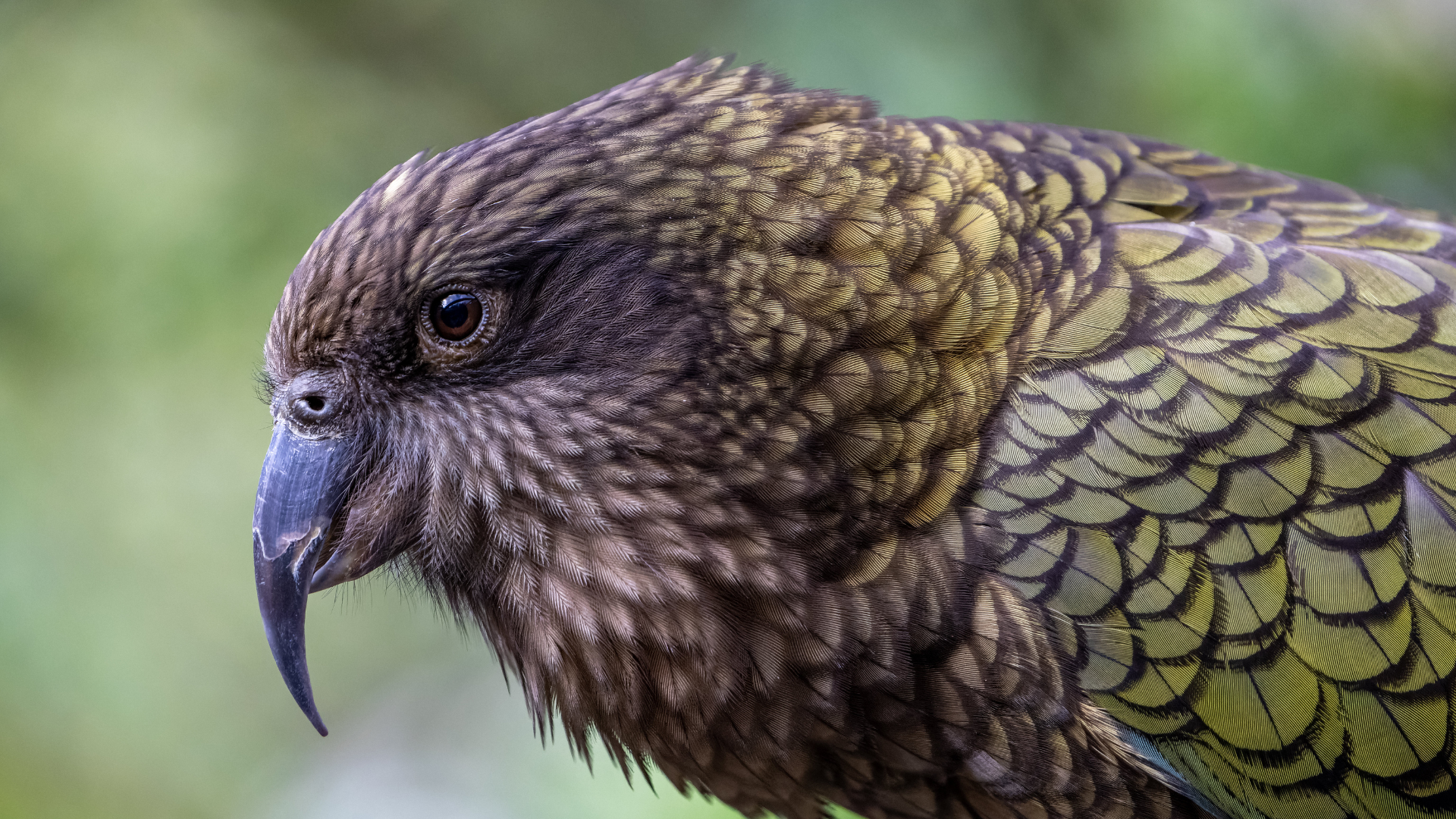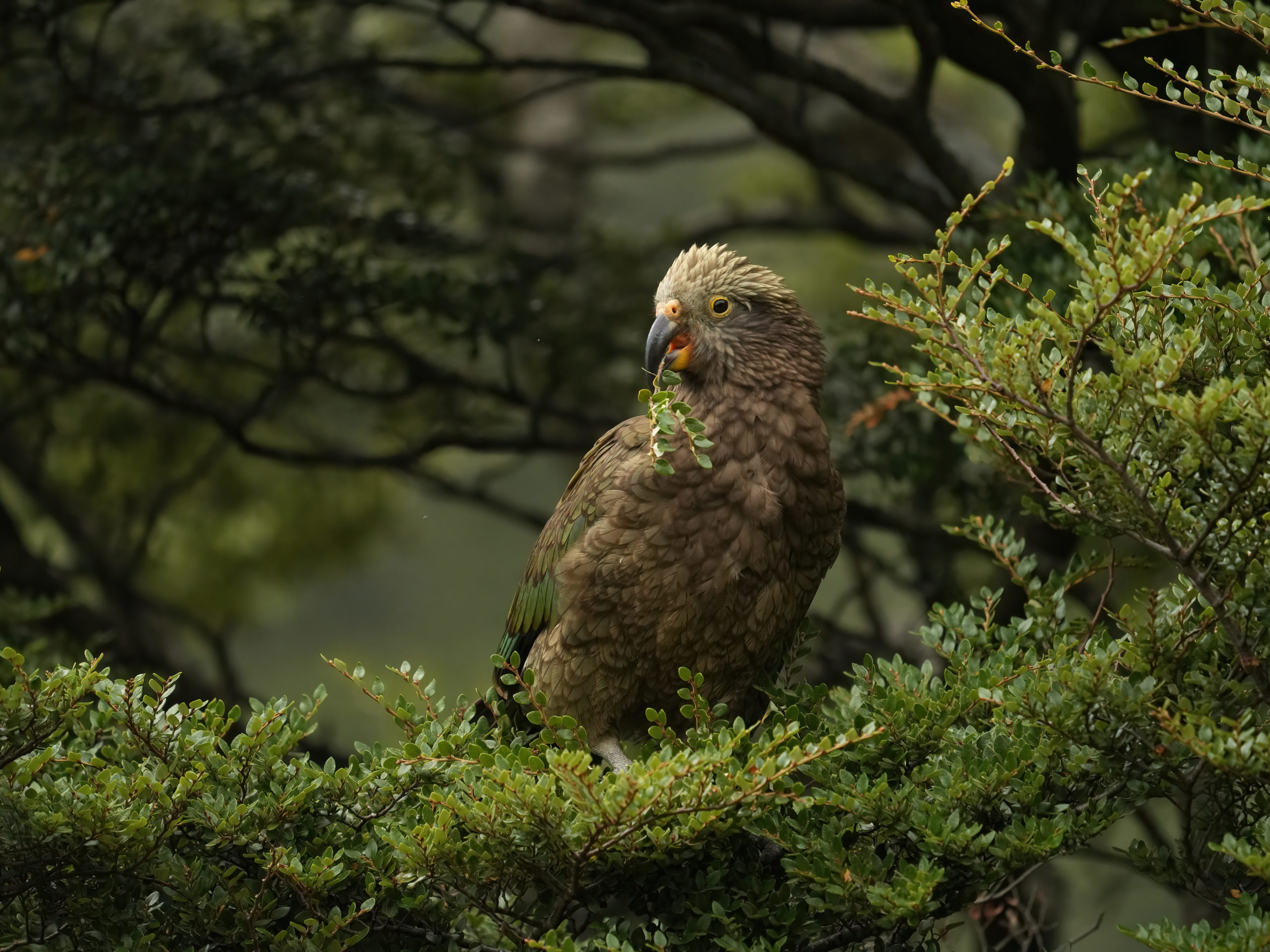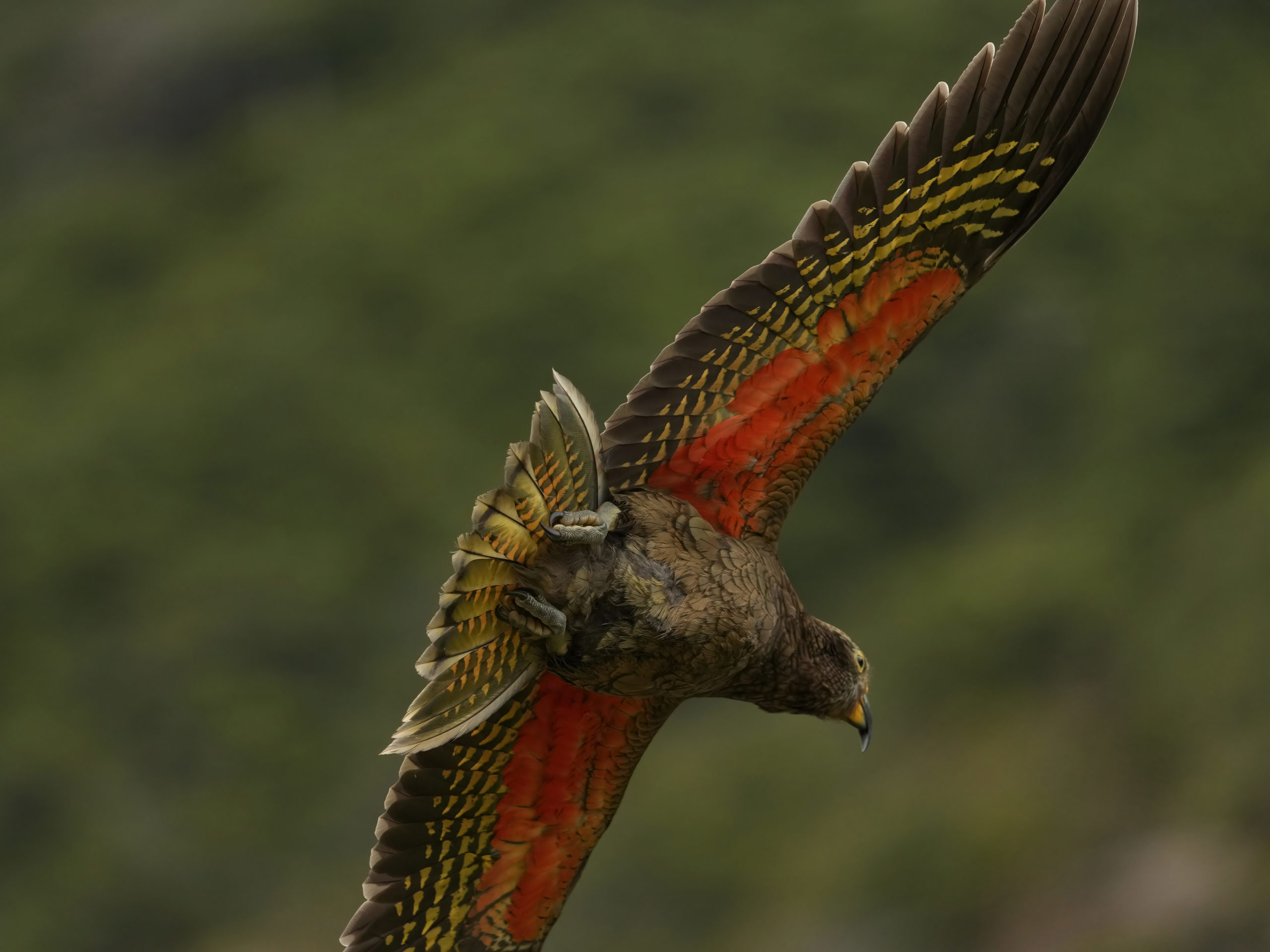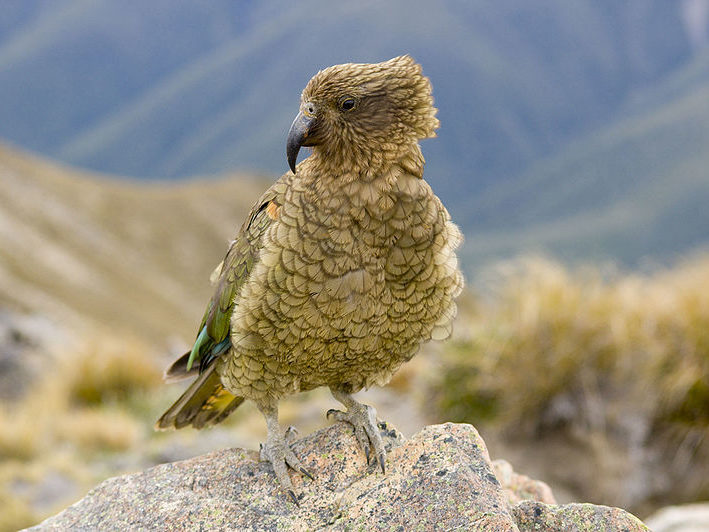Dubbed ‘the clever clowns of the Alps’, kea are much loved for their cheeky spirit and keen intelligence. So it can be shocking to learn that these fun-loving birds are in serious trouble, with populations in decline.

So how did we get to this point? And what can be done to save the kea?
A rare bird in decline
Kea are the world’s only alpine parrot and they’re a species unique to Aotearoa New Zealand. When visiting the Southern Alps, locals and tourists alike keep an eye out for these playful, intelligent birds.
Unlike most wildlife, kea are ‘neophiliacs’, meaning they love to interact with new things – which often includes humans and their property. Attacking your window wipers and rummaging in your bag might seem like a nuisance, but this tomfoolery is in fact a sign of how brainy these curious birds are.
Just how smart are kea? In a recent study, University of Auckland experts showed that kea were able to judge statistical odds and social cues in a way only ever seen before in great apes. Their intelligence has even been compared to that of a four-year-old child.

It’s clear that kea are a uniquely wonderful bird. Losing them would be a tragedy for New Zealand – and the world. But unfortunately, we are losing them.
It’s hard to know exactly how many kea are left due to their extensive range, rugged habitat, and cryptic behaviour. The Kea Conservation Trust estimates fewer than 7,000 individuals are left in the wild. So, how did we get to this point?
The history of kea

Fossil records tell us that kea have existed for at least 10,000 years – once inhabiting the North Island.
Today, they are only found in the South Island (with the occasional bird turning up in unusual places and some sightings as far north as the Tararua Range).
National Geographic reports evidence that the kea “survived in the North Island high country until after the arrival of the Māori, but it has been seen there only as a straggler in European times.”
When Māori settled in New Zealand, they likely impacted kea populations – given they were fancied for feathers and kai.
However, the bird’s preference for the cold alpine zone meant they were left alone in large expanses of land in locations less desirable for humans.
Māori likely named the bird after its call – ‘keee aaa’. Some iwi and hapū consider kea kaitiaki (guardians) such as the South Island Waitaha tribe.
European resettlement
When Europeans arrived, everything changed for the kea.
In the late 1860s, sheep farmers moved their flocks into the backcountry and quickly came into conflict with kea. Kea were seen attacking sheep and scavenging their carcasses.
These birds were quickly blamed for the low productivity on these farms and in retaliation, a bounty was introduced. Looking back, newly introduced animals such as rabbits and pigs were already reaching plague proportions and were certainly impacting the productivity of these farms.
For a hundred years, a government-sponsored bounty meant that a severed kea head or beak could earn you up to $75 (in today’s money). The bounty was outlawed in 1971. By that time, an estimated 150,000 kea had been slaughtered.

The efficiency and cruelty of the bounty killings are clear in an excerpt from an 1883 newspaper article.
“Should a flock of [kea] be met with, and one of them wounded, the remainder are easily obtained. The bond of fellowship appears to be so strongly developed that the cries of a wounded bird at once attract the presence of its mates. This habit is taken advantage of by the hunter or fowler, who usually stands on the wings of a wounded bird, whose calls quickly summon the remainder of the flock within shooting distance.”
Scientist T. H. Potts
The kea bounty has ended. Why are kea populations still declining?

Unfortunately, the end of the bounty did not remove all threats to kea. The birds are now considered endangered, and their populations continue to decline. So, what threats do kea face today?
Kea are ground-nesting birds, which makes them extremely vulnerable to attacks from introduced predators. Without predator control, about 60% of kea nests fail mainly because stoats, possums and feral cats prey on them.
Although predator control benefits our kea population, there have been instances of kea being injured or killed as they investigate a trap.
To avoid this very sad outcome, the Kea Conservation Trust offers a guide on how to kea-proof your predator control efforts.
Lead use is another threat we’ve brought to kea. Old buildings in the backcountry often have lead building materials and kea have been known to seek out and chew on the sweet-tasting metal. Lead poisoning can be deadly for kea and any level of lead exposure can cause issues like impaired development and decreased cognitive function.
Currently, the Kea Conservation Trust is working in areas throughout the South Island to remove lead from private dwellings and replace it with non-toxic alternatives.
But it’s not just the predators that we’ve introduced and the materials we’ve used that are causing complications for kea populations. It seems we humans still need to realise the importance of living alongside our wildlife.
Although kea have been fully protected under the Wildlife Act since 1986, kea are still being killed due to human conflicts – either being illegally poisoned or shot. Accidents with human objects are also common including vehicle collisions and injuries from heavy or electrical equipment.
Is this the end for kea?
Unfortunately, the future of our kea isn’t assured. But there is hope.
We are seeing huge efforts to protect our kea through educating the public, mitigating risks and controlling predators.
It is clear that with our help, kea are able to breed with far more success.
The best news of all?
We’re all able to take action – small or large – to help the survival of this mischievous, clever bird.
Here are our top four ways you can make a difference.

- If you live in an area with a kea population, support local predator control projects through volunteering or donations such as Arthur’s Pass Wildlife Trust, Permolat Southland and Aspiring Biodiversity Trust. You can use our map to search for local groups.
- You can also support the Kea Conservation Trust through volunteering and donating.
- Could your property be giving local kea lead poisoning? The Kea Conservation Trust offers free site assessments and your property may qualify for a free de-leading.
- Report kea sightings so that we can learn more about what kea get up to and where they go. When visiting kea, don’t feed them, avoid leaving tempting objects unattended and contact the Kea Conservation Trust if you come across sick or injured kea.
If you have kea that are damaging your property or causing you issues, contact the Kea Conservation Trust or check out their information on kea-proofing your belongings.

